At Audubon’s Pine Island Sanctuary on Currituck Sound, a vast array of wildlife calls the marshes home—birds, snapping turtles, otters, and snakes, to name a few. Plant life on the island is extremely diverse as well. Many birds rely on the black needle rush and big cordgrass for food and shelter.
Among these birds are a handful of species that are especially well-adapted to life in the tall marsh grasses, but that also makes them hard to find. These secretive marsh birds are more often heard than seen.
It’s important for Audubon to study secretive marsh birds because they can help us determine the health of the marsh. This spring, Audubon staff and volunteers headed deep into the marshes at Pine Island to look for five priority secretive marsh bird species: King Rail, Viginia Rail, Black Rail, Least Bittern, and Common Gallinule.
King Rail
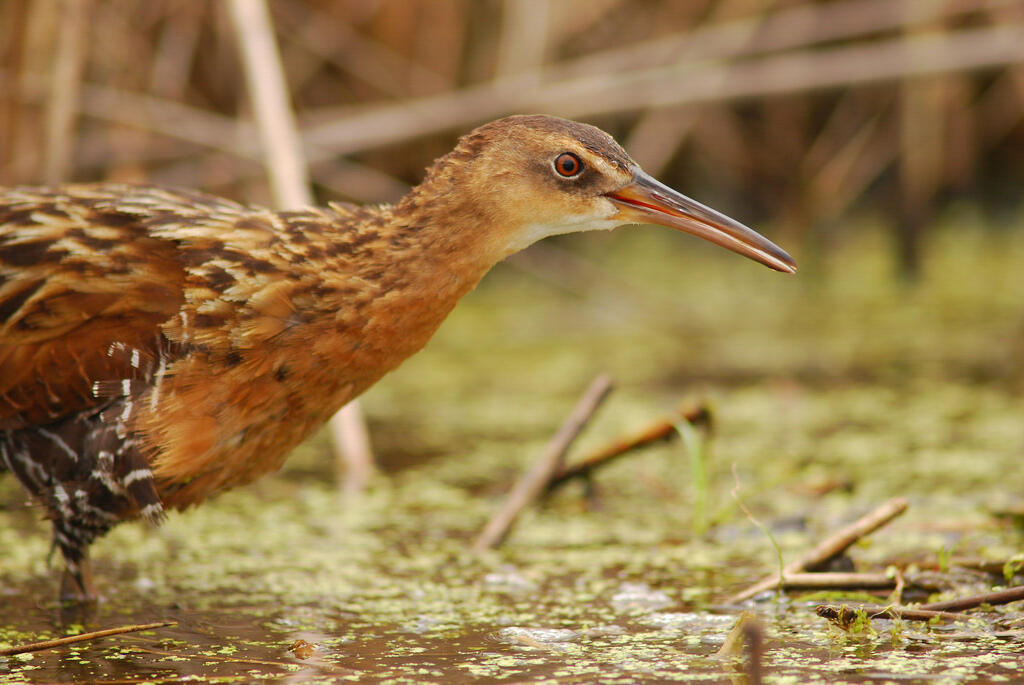
King Rails are large birds that maneuver stealthily through the marsh, earning them the nickname “sneaky marsh chickens” from Pine Island Sanctuary Director Robbie Fearn. King Rails live in freshwater marshes of the Atlantic and Gulf Coasts and can be found in large numbers at Pine Island. However, King Rail populations are declining across their range as much of their wetland habitat has been drained.
If spotted, the King Rail can be differentiated from its rail cousins by its larger size and rusty color. King Rails feed on insects and crustaceans. For any bird, one of the most important identification markers is their call. The King Rail’s call is a repetitive cluck—“kek-kek-kek-kek,” and sounds like a car key starting the ignition.
Virgina Rail
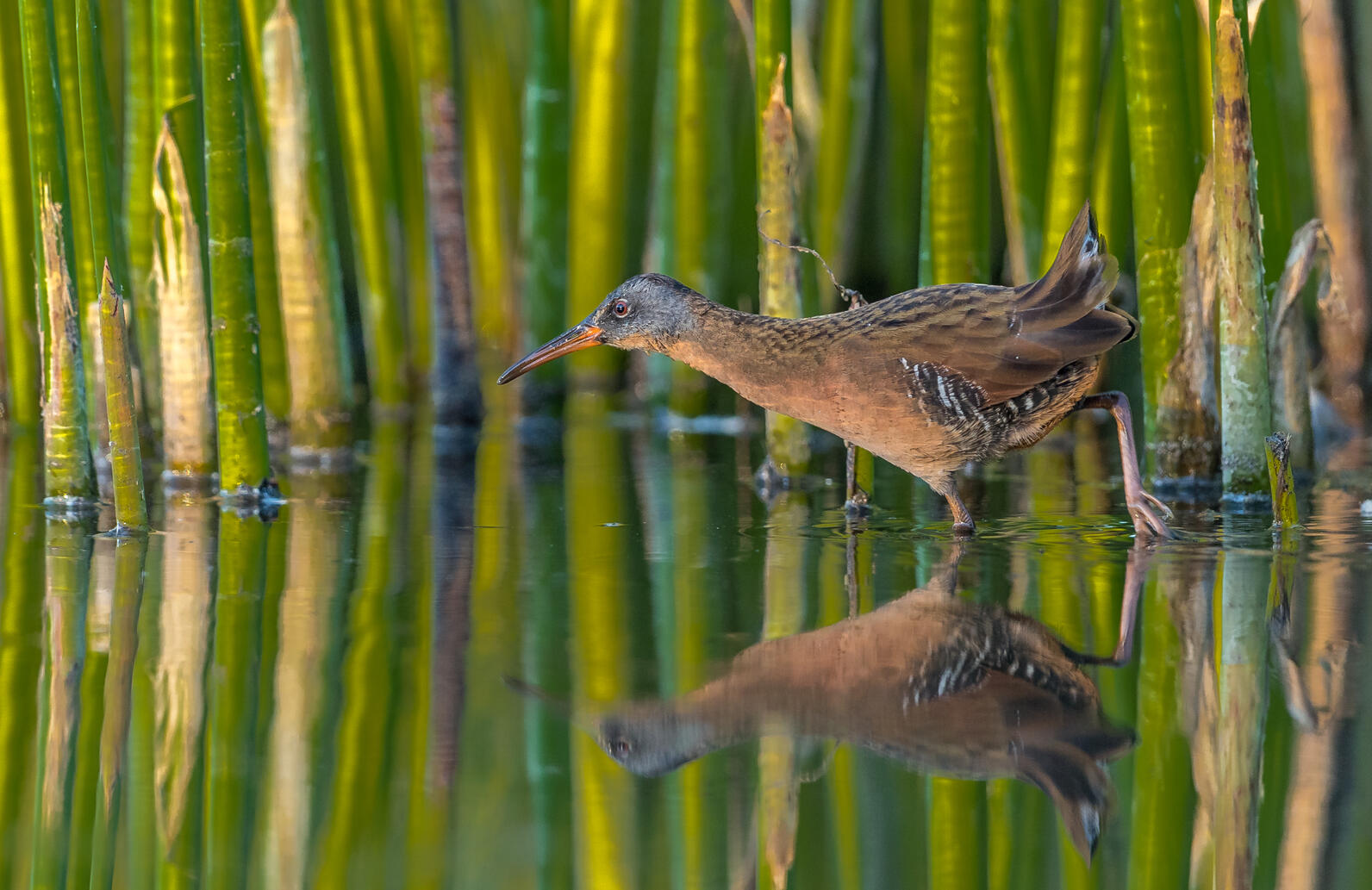
A clear difference between the King Rail and Virginia Rail is their size. Virginia Rails are much smaller and sometimes harder to spot through the tall marsh grasses. Virginia Rails are a lovely cinnamon color with black and white on their flanks, and stand out because of their gray cheeks. Virginia and King Rails are known for their long bills that help grab insects, snails, and crayfish out of the marsh. They nest in marshes along the Pacific Coast and the northern half of the Atlantic Coast, and they winter from the southern U.S. down to Central America.
Although Virginia Rails are hard to see, their far-carrying call extends outside of the marsh’s thick grass. The song sounds like: “ticket-ticket-ticket.” If you hear this call, the Virginia Rail isn’t telling you that concert tickets are for sale, it’s actually how male Virginia Rails say good morning and good night.
Black Rail
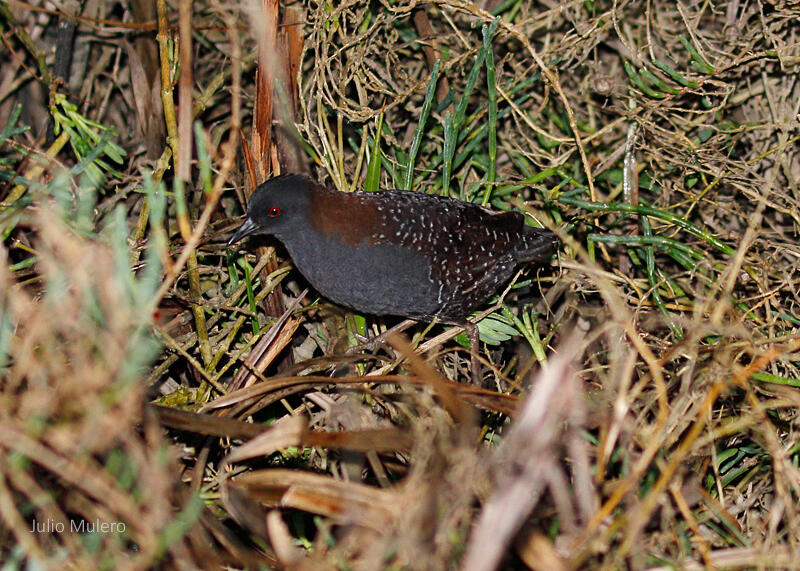
A sparrow-sized bird, the Black Rail is short-billed, dark in color, and the smallest of the secretive marsh birds. They are as quiet as a mouse when they tread quickly through the marsh on legs the size of toothpicks. Black Rails live in fresh water marshes along the southern Atlantic and Gulf Coasts.
Last year, the Black Rail was officially classified as threatened under the Endangered Species Act. Populations have been declining rapidly due to loss of habitat across its range, including in North Carolina. However, protected habitats like Audubon’s Pine Island Sanctuary could be a stronghold for the bird in the future.
Black Rails were already secretive and now it has become increasingly difficult to see or hear them. If you do hear a Black Rail, the call is soft but distinctive, following a “ki-ki-kerrr" pattern.
Least Bittern
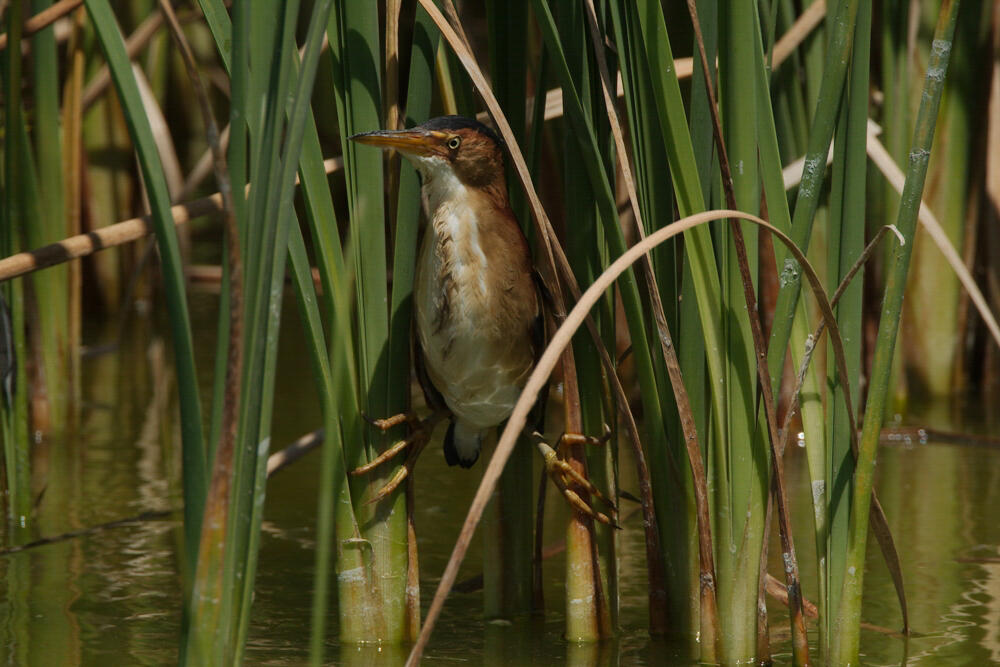
Least Bitterns are one of the smallest herons in the world, but unlike most herons, this bird clings to reeds and tall grass rather than wading through the shallow water. Their narrow body allows them to slip through the marsh undetected. Least Bitterns live in freshwater marshes along the southern Atlantic and Gulf Coasts.
If spotted, the Least Bittern may be one of the easier secretive marsh birds to identify. Their bright reddish-brown color makes them stand out. They have a long bill that is used to feed on small fish and large insects like dragonflies. Their calls are relatively soft in comparison to rails and sounds like a chuckling “coo-coo-coo.” In the most recent secretive marsh bird surveys at Pine Island, Least Bitterns were one of the most commonly sighted birds.
Common Gallinule
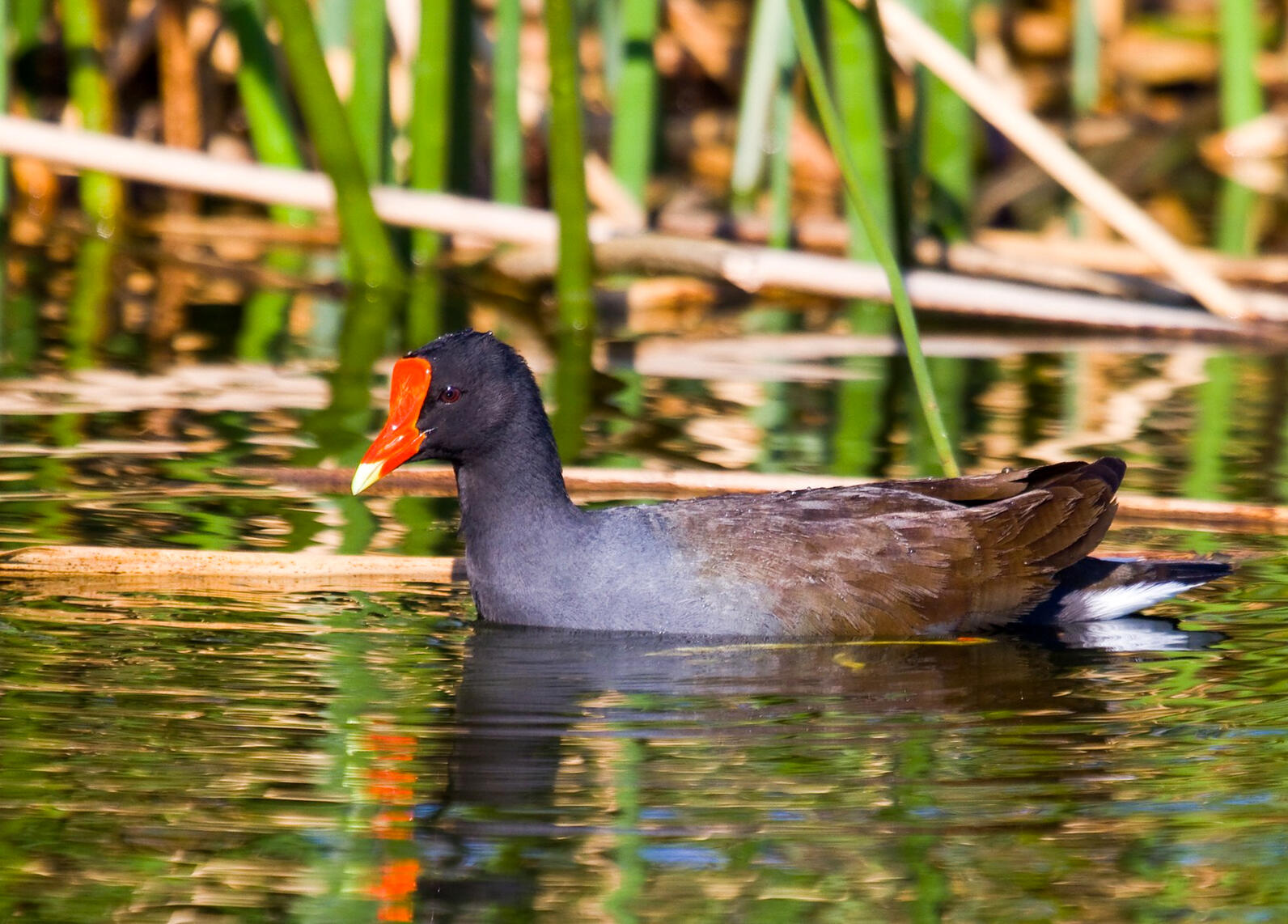
The Common Gallinule is unique among secretive marsh birds because they often swim in the water like a duck. But they can also walk on and through marsh vegetation like a rail. Common Gallinules live in fresh water marshes from the Atlantic to the Pacific Coast and to parts of Central America. Although common is in its name, this species has experienced a population decline due to loss of its wetland habitat.
Common Gallinules are dark gray in color and have a thick, bright red bill. They are omnivores, meaning they eat plants as well as insects. Their calls resemble the sound of trumpet notes, similar to the American Coot. In a group, the Gallinule’s may sound like a beginner trumpet quartet.









